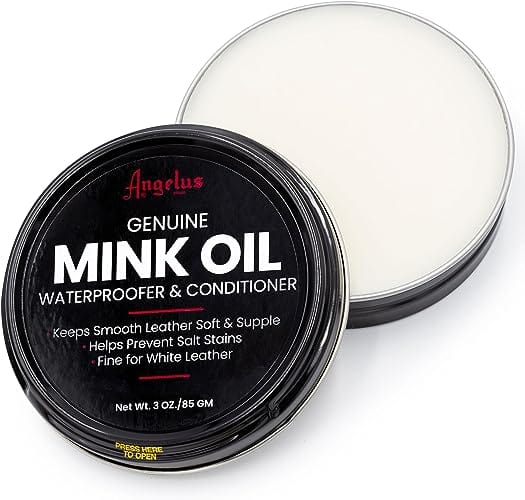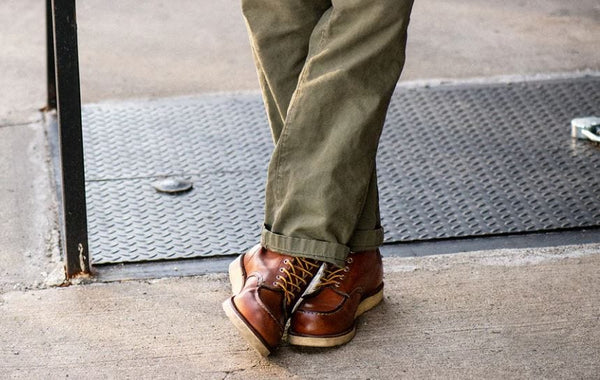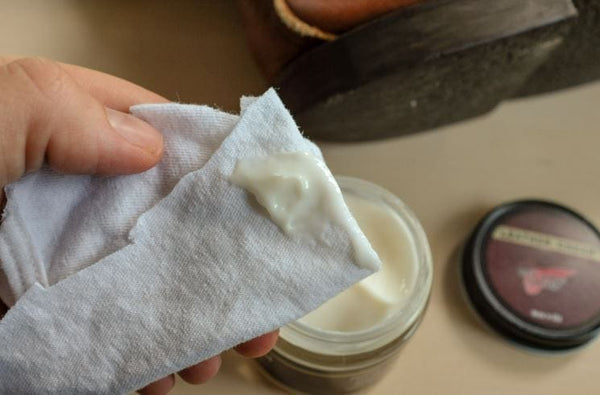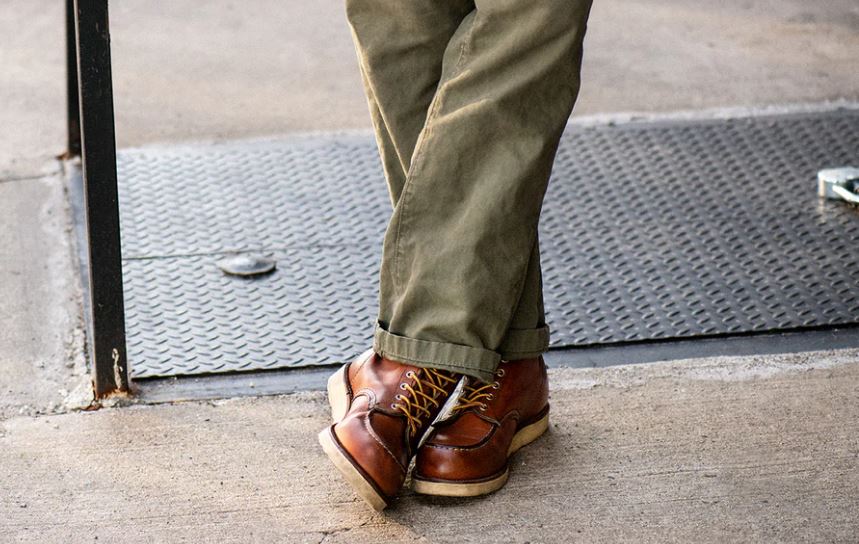Your cart is currently empty
Is Mink Oil Good for Leather? Exploring the Pros and Cons
Leather has been a cherished material for centuries, appreciated for its durability, texture, and timeless appeal. To maintain its quality and extend its lifespan, various leather care products are available on the market. One such product that often emerges in discussions about leather care is mink oil. Derived from the fatty layer beneath a mink's skin, mink oil has gained popularity as a leather conditioner and protector. However, the question remains: is mink oil truly beneficial for leather?
The Pros of Using Mink Oil on Leather
1. Conditioning: Mink oil is renowned for its deep conditioning properties. When applied to leather, it penetrates the fibers, restoring moisture and suppleness. This is particularly valuable for dry or stiff leather items, such as boots, jackets, and saddles. The oil's moisturizing effect can prevent cracking and maintain the leather's natural flexibility.
2. Water Resistance: Mink oil creates a protective barrier on the leather's surface, which can help repel water and moisture. This can be advantageous in preventing water-related damage, such as staining, warping, or mold growth. However, it's important to note that excessive use of mink oil can lead to over-conditioning and, paradoxically, reduced water resistance.
3. Softening: Leather items can sometimes be rigid and uncomfortable, especially when new. Mink oil can aid in softening the leather, making it more comfortable to wear or use. This can be particularly useful for breaking in new leather products.
4. Enhanced Appearance: Mink oil can lend a soft sheen to leather, enhancing its appearance. It can rejuvenate the color and vibrancy of faded leather, giving it a renewed and polished look.
The Cons of Using Mink Oil on Leather
1. Darkening and Staining: One of the most significant drawbacks of using mink oil on leather is its potential to darken and stain the leather. Mink oil tends to darken leather over time, altering its original color. This can be particularly problematic if you're trying to maintain the leather's natural shade or if you're working with lighter-colored leather items.2. Reduced Breathability: While mink oil does create a protective layer on the leather, this can also hinder the material's breathability. Leather needs to "breathe" to maintain its health and integrity. Over time, excessive use of mink oil can lead to trapped moisture within the leather, potentially causing mold or mildew growth.
3. Breakdown of Glues: Some leather items, like shoes and bags, are held together with adhesives or glues. Prolonged use of mink oil can break down these adhesives, leading to a decrease in the overall structural integrity of the item.
4. Loss of Patina: Many leather enthusiasts appreciate the development of a patina, a natural and unique aging process that adds character and beauty to leather products. The consistent application of mink oil can hinder the development of this desired patina, resulting in a uniform and somewhat artificial appearance.
Therefore, in the debate over whether mink oil is good for leather, the answer lies in a nuanced balance. Mink oil can indeed offer benefits such as conditioning, water resistance, and softening. However, its potential to darken, stain, reduce breathability, and interfere with natural aging processes must also be considered. To make an informed decision, leather enthusiasts should evaluate their specific needs and preferences.
Shop monogrammed leather gifts

For individuals who prioritize color preservation, breathability, and natural aging, alternative leather care products like beeswax-based conditioners, lanolin-based treatments, or specialized leather creams might be more suitable choices. Ultimately, the suitability of mink oil for leather care depends on the individual's priorities and the intended use of the leather items in question.
Characteristics of Mink Oil: A Natural Elixir for Skin and Leather Care
In the realm of natural skincare and leather care, mink oil has emerged as a highly prized ingredient, renowned for its versatile properties and numerous benefits. Derived from the fatty layer beneath the mink's skin, mink oil has been used for centuries by various cultures for its exceptional moisturizing, conditioning, and protective qualities. As the demand for natural and holistic solutions grows, mink oil has found a prominent place in the world of cosmetics, personal care, and leather treatment. In this article, we delve into the remarkable characteristics of mink oil and its applications in the realms of skincare and leather maintenance.
- Rich Source of Essential Fatty Acids:
Mink oil is prized for its high content of essential fatty acids, such as omega-3, omega-6, and omega-9. These fatty acids are crucial for maintaining healthy skin and promoting the skin's natural barrier function. Omega-3 fatty acids are known for their anti-inflammatory properties, making mink oil an excellent choice for soothing irritated and sensitive skin. These fatty acids play a pivotal role in nourishing the skin from within, helping to improve its texture, hydration, and overall appearance.
- Deep Moisturization:
One of the most remarkable characteristics of mink oil is its ability to deeply moisturize the skin. Mink oil is easily absorbed, allowing it to penetrate the skin's layers and provide hydration where it's needed most. This makes it a popular choice for dry, chapped, and rough skin. Regular application of mink oil can help maintain the skin's moisture balance, resulting in a smoother, more supple complexion.
- Anti-Aging Benefits:
Mink oil's high content of antioxidants, such as vitamin E, helps combat the signs of aging. Antioxidants play a crucial role in neutralizing free radicals that damage skin cells and contribute to premature aging. By incorporating mink oil into a skincare routine, individuals can support their skin's resilience against environmental stressors and maintain a youthful glow.
- Versatile Applications:
Mink oil's benefits extend beyond skin care. It is widely used in leather care as well. Leather products, such as shoes, bags, and furniture, can be prone to drying out and losing their natural luster over time. Mink oil acts as a natural conditioner, restoring and revitalizing leather goods. It nourishes the leather fibers, preventing them from becoming brittle and helping to maintain their softness and flexibility.
- Compatibility with Different Skin Types:
Unlike some skincare products that may be limited to specific skin types, mink oil is generally well-tolerated by various skin types, including sensitive and oily skin. Its non-comedogenic nature means it won't clog pores, making it suitable for those prone to breakouts. However, as with any new skincare product, a patch test is recommended before full use to ensure compatibility and avoid potential adverse reactions.
- Ethical Considerations:
It's important to note that mink oil is derived from minks, which are often raised for their fur. Due to concerns about animal welfare and ethical considerations, some individuals may choose to avoid mink oil and opt for plant-based alternatives. Before incorporating mink oil into your routine, it's worth researching the source and production methods of the oil to ensure alignment with your values.
In conclusion, mink oil possesses a range of exceptional characteristics that make it a prized ingredient in both skincare and leather care. Its high content of essential fatty acids, deep moisturizing properties, and potential anti-aging benefits make it a valuable addition to natural skincare routines. Additionally, its ability to restore and maintain the quality of leather products underscores its versatility and utility. As with any skincare or personal care ingredient, it's important to consider personal values and preferences when choosing whether to incorporate mink oil into your routine.
Does Mink Oil Truly Waterproof Leather?
Leather has been a cherished material for centuries due to its durability, versatility, and timeless appeal. However, leather's natural vulnerability to moisture has led to the development of various products aimed at enhancing its water resistance. Mink oil, a popular choice among leather enthusiasts, is often touted as a solution for waterproofing leather. But does mink oil truly live up to its reputation as a waterproofing agent? In this article, we delve into the properties of mink oil and its effectiveness in safeguarding leather against water damage.
Mink oil is derived from the fat of mink pelts through a rendering process. Rich in essential fatty acids, mink oil is known for its ability to nourish, condition, and soften leather. It's widely used in leather care products like conditioners and waterproofing agents due to its purported water-repellent properties. The idea is that by applying mink oil to leather, the oil's natural hydrophobic characteristics will create a barrier against moisture, thereby protecting the leather item from rain, spills, and other sources of water.

Waterproofing Mechanism
Mink oil's water-repellent reputation stems from its composition. The fatty acids present in the mink oil help to create a protective layer on the leather's surface, reducing the leather's porosity and preventing water molecules from penetrating. This barrier can provide some level of protection against water-related damage, including staining, warping, and cracking, which can occur when leather absorbs excess moisture.
The Reality: Water Resistance vs. Waterproofing
While mink oil does offer some degree of water resistance, it's important to distinguish between water resistance and true waterproofing. Water resistance implies that a substance can repel water to a certain extent, but it may eventually become saturated if exposed to prolonged or heavy moisture. True waterproofing, on the other hand, refers to a material's ability to completely block the passage of water.
Mink oil can effectively repel water for a certain period, but it may not be sufficient for situations involving prolonged exposure to moisture or heavy rainfall. Over time, the protective layer created by mink oil can wear off, diminishing its water-repellent capabilities.
Considerations and Limitations
- Leather Type: Mink oil may work differently depending on the type of leather. Some leathers are naturally more resistant to water, while others are more porous and require additional treatment.
- Application: The effectiveness of mink oil in waterproofing leather depends on the application process. Properly applying mink oil evenly and allowing it to be absorbed can enhance its performance.
- Maintenance: Regular reapplication of mink oil is essential to maintain its water-repellent properties. As the oil wears off, leather can become more susceptible to water damage.
- Climate and Usage: The effectiveness of mink oil can vary based on the climate and how the leather item is used. Extreme weather conditions and frequent exposure to water can challenge its protective capabilities.
In conclusion, mink oil does possess water-repellent properties that can provide some level of protection to leather items against water damage. However, it's crucial to recognize its limitations in terms of providing long-lasting and comprehensive waterproofing. Mink oil can be a valuable component of leather care routines, especially for maintaining leather's suppleness and preventing minor water-related issues. Yet, for scenarios requiring robust waterproofing, considering additional protective measures and specialized waterproofing products may be advisable. Ultimately, understanding the properties and capabilities of mink oil empowers leather enthusiasts to make informed decisions regarding the care and protection of their cherished leather goods.
Mastering the Art of Applying Mink Oil on Leather: A Step-by-Step Guide
Leather, a timeless and elegant material, requires proper care to maintain its durability and charm. Among the array of leather care products, mink oil stands out as a popular choice for nourishing and protecting leather items. Whether you're dealing with a leather jacket, boots, or a beloved bag, learning the correct technique to apply mink oil can significantly extend the lifespan of your leather possessions. In this section, we'll walk you through a step-by-step guide on how to properly apply mink oil on leather.

Materials You'll Need
Before diving into the application process, gather the following materials:
- Mink oil
- Soft, clean cloth or sponge
- Leather cleaner (if needed)
- Soft brush (optional, for cleaning)
- Hairdryer (optional, for speeding up absorption)
Step 1: Clean the Leather
Start by cleaning the leather surface. Use a soft brush or cloth to remove any dust, dirt, or debris. If your leather item is especially soiled, consider using a leather cleaner to ensure a clean and even surface for mink oil application.
Step 2: Test a Hidden Area
Before applying mink oil to the entire leather item, it's advisable to perform a patch test on a hidden or inconspicuous area. This will help you gauge how the leather reacts to the mink oil and ensure it doesn't cause any adverse effects like discoloration or damage.
Step 3: Apply Mink Oil
3.1. Take a small amount of mink oil on a clean, soft cloth or sponge. Remember, a little goes a long way, so start with a small quantity.
3.2. Begin applying the mink oil to the leather in a circular, gentle motion. Work in small sections to ensure even coverage. Pay special attention to areas that are more prone to wear and tear, such as seams and creases.
3.3. Continue applying the mink oil until you've covered the entire leather surface. Be patient and thorough in your application, ensuring the oil is absorbed into the leather.
Step 4: Allow Absorption
After applying mink oil, let the leather sit for about 20-30 minutes. This allows the oil to penetrate the leather fibers and create a protective barrier. During this time, you might notice the leather appearing slightly darker – this is a normal part of the process.
Step 5: Buff the Leather
Using a clean, dry cloth, gently buff the leather to remove any excess mink oil. This step helps to bring out the leather's natural luster and prevents the surface from feeling greasy.
Step 6: Optional - Speed Up Absorption
If you're looking to expedite the absorption process, you can use a hairdryer on the lowest heat setting. Hold the dryer a few inches away from the leather and move it back and forth to help the mink oil penetrate more effectively.
Step 7: Final Touches
Once you're satisfied with the absorption and buffing, let the leather item sit for a few hours or overnight. This ensures that the mink oil fully integrates with the leather before you use or wear the item.
In conclusion, applying mink oil to leather is a rewarding endeavor that can enhance the longevity and beauty of your cherished leather items. By following this step-by-step guide, you'll be able to properly apply mink oil and create a protective barrier that guards against moisture and wear. Remember, consistency is key, so consider incorporating mink oil application into your regular leather care routine to enjoy the benefits of well-maintained and protected leather goods for years to come.

Leather is one of the most luxurious materials around. It looks good and it’s durable, making it perfect for garments, furniture, and other items. But leather needs to be taken care of correctly to maintain its luster and quality. Mink oil is a great way to do this - but as with anything else, there are both pros and cons when it comes to using mink oil on your leather goods.
We hope this article on mink oil and leather clarified the impact of using mink oil as a leather conditioner. With the right knowledge and techniques, you can ensure that your leather products will keep looking good for years to come. Thanks for reading.
Shop our collection of:
Vintage Leather Backpack | Dark Brown Leather Backpack | All Black Leather Backpack | Vintage Duffle Bag | Vintage Leather Briefcase | Vintage Bag | Custom Leather Binders
Related Posts:




